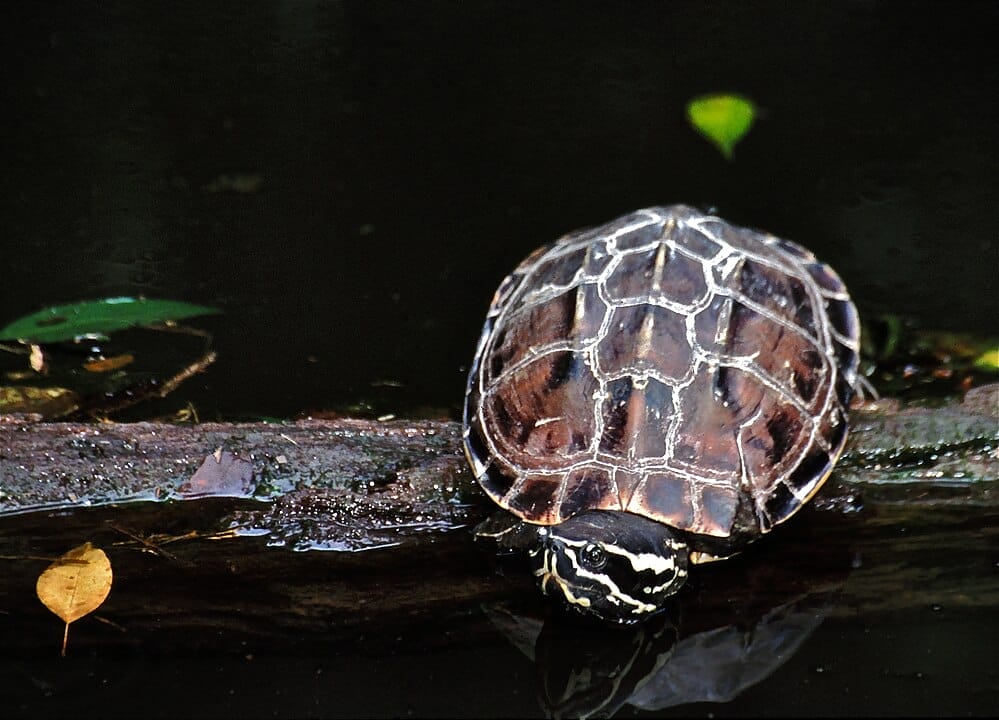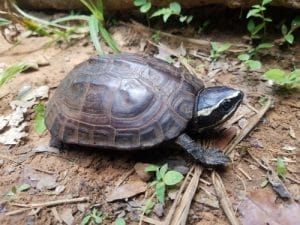Malayemys subtrijuga (Mekong snail-eating turtle)
Home > Turtle Database > Malayemys subtrijuga (Mekong snail-eating turtle)

Malayemys subtrijuga, commonly known as the Mekong snail-eating turtle, is a small freshwater turtle species native to Southeast Asia. Renowned for its unique dietary preference for snails, it plays an important ecological role in controlling mollusk populations.
Native To These Regions
Cambodia, Laos, Thailand, VietnamNative Turtle Species Map – Find Turtles by Region
Scientific Classification
Kingdom: Animalia
Phylum: Chordata
Class: Reptilia
Order: Testudines
Family: Geoemydidae
Genus: Malayemys
Species: M. subtrijuga
Common Names
Mekong snail-eating turtle
Mekong terrapin
This Hilarious Turtle Book Might Know Your Pet Better Than You Do
Let’s be real—most turtle care guides feel like reading a textbook written by a sleep-deprived zookeeper.
This one’s not that.
Told from the snarky point of view of a grumpy, judgmental turtle, 21 Turtle Truths You’ll Never Read in a Care Guide is packed with sarcasm, sass, and surprisingly useful insights.
And hey—you don’t have to commit to the whole thing just yet.
Grab 2 free truths from the ebook and get a taste of what your turtle really thinks about your setup, your food choices, and that weird plastic palm tree.
It’s funny, it’s honest, and if you’ve ever owned a turtle who glares at you like you’re the problem—you’ll feel seen.
Identification
Description
Malayemys subtrijuga is a small to medium-sized turtle with a carapace length of up to 20 cm. The shell is dark brown to black with yellowish radiating lines on each scute. Its plastron is pale with darker blotches.
Sexual Dimorphism
Females are generally larger than males and have a more rounded carapace. Males often have a longer, thicker tail and a concave plastron.
Check more turtles from the Malayemys genus
Native Origin and Distribution
Geographical Range
This species is primarily found in the Mekong River basin, spanning Cambodia, Laos, Thailand, and Vietnam. It also inhabits nearby wetlands and lowland areas.
Preferred Habitat
Malayemys subtrijuga thrives in slow-moving freshwater environments such as ponds, swamps, rice paddies, and canals. It prefers areas with abundant vegetation and soft, muddy substrates.
Behavior
Feeding Habits
As its name suggests, this turtle primarily feeds on snails, using its strong jaws to crush their shells. It may also consume small aquatic invertebrates and plant matter.
Predators
Predators of this species include large fish, birds, and crocodilians. Human activities also pose significant threats.
Reproduction
Breeding Season
The breeding season typically occurs during the dry months, from November to February.
Reproductive Method
Females lay small clutches of eggs (usually 3–8) in nests dug into sandy or muddy banks. Hatchlings emerge after an incubation period of about 60–90 days.
Conservation
Extinction Status
Malayemys subtrijuga is currently listed as Near Threatened by the IUCN.
Threats
Major threats include habitat loss due to agriculture and urbanization, pollution, and overharvesting for food and the pet trade.
Conservation Measures
Conservation efforts include habitat protection, breeding programs, and regulations on trade and collection. Community awareness campaigns are also underway in some regions.
Economic Importance
This turtle is valued in some areas for its role in pest control, particularly in rice fields where it reduces snail populations. However, its use in the pet trade and local cuisine contributes to overexploitation.
Interesting Facts
Malayemys subtrijuga is one of the few turtle species specialized in eating snails. Its strong jaw structure is perfectly adapted for crushing hard shells. This species can tolerate polluted environments better than many other turtles, making it a survivor in urbanized areas.

About Author
Muntaseer Rahman started keeping pet turtles back in 2013. He also owns the largest Turtle & Tortoise Facebook community in Bangladesh. These days he is mostly active on Facebook.













